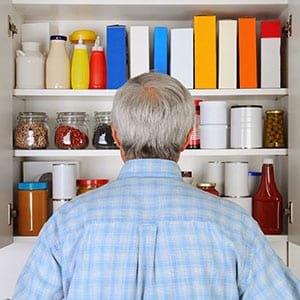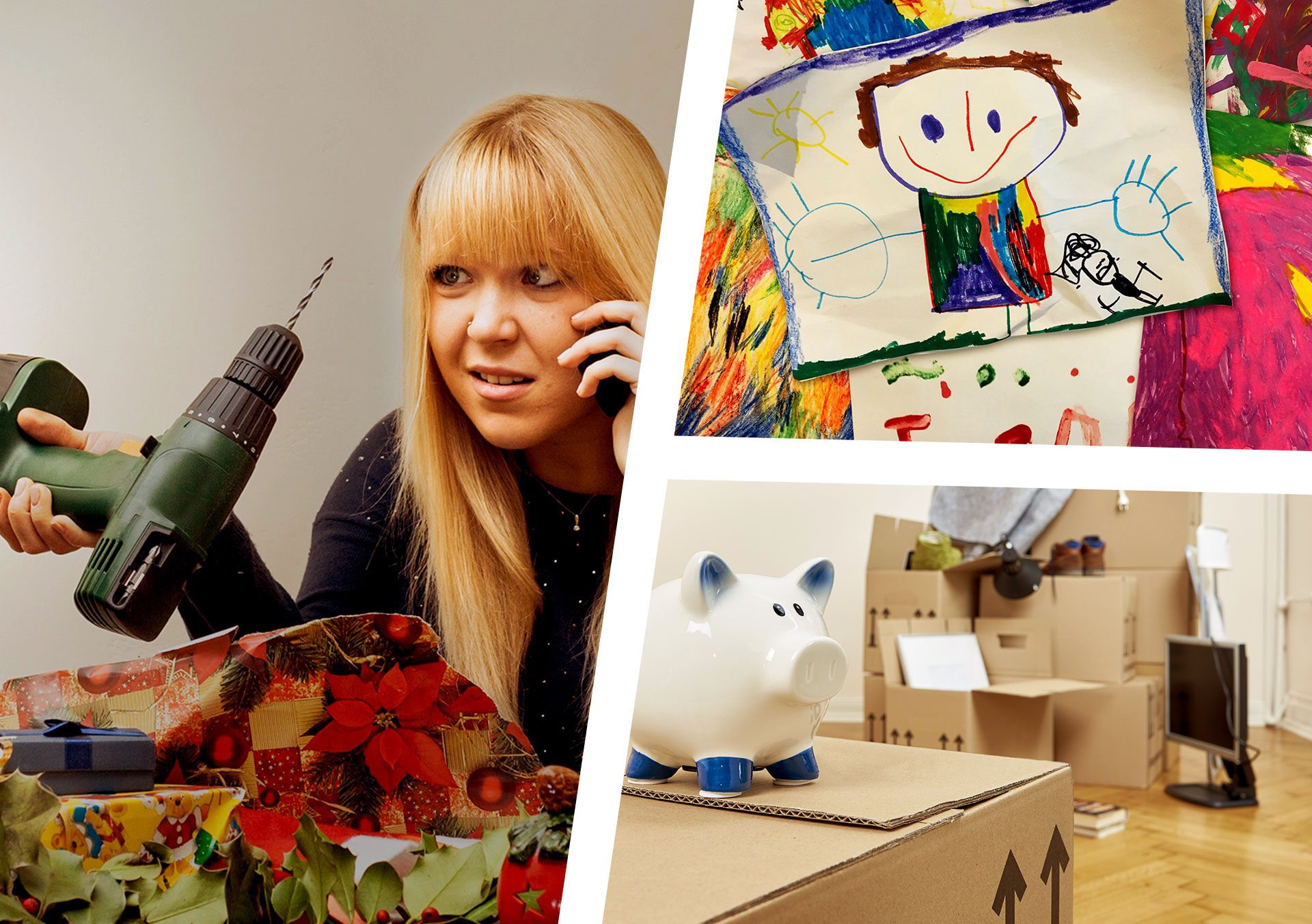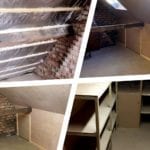We have now entered a new decade and chances are, you will treat this as a fresh start and look at getting more organised in 2020. We’re hoping this article may be exactly what you need to kickstart your goal of being organised this new year.
Before we can move on, let’s review the past month. The Christmas season is particularly busy for all of us. Parties, activities, gatherings, and gift-giving.
Unwanted Presents
So the Christmas holidays are over, maybe you’ve received a lot of presents from loved ones, family, friends and colleagues. If you have a big circle, maybe too many! Receiving unwanted gifts can be awkward and a bit of a dilemma. So what do you do with them? If you don’t think you’ll ever use them, and that they will probably just end up in a cupboard gathering dust, why not try these tips we have come up for you?
- If you were given a gift receipt, why not exchange it for something you need from the shops? You can also just get store credit then treat yourself or a loved one to something in the future.
- What about gifting it to someone whom you know will like it instead? Just be mindful of the same cycle of “unwanted presents”.
- Why not try selling them for some spare cash? eBay and Gumtree are great places to do that. Pro tip: A good number of people will be doing this at the moment therefore prices will be lower in January. You might want to wait until mid-February or even better in March to get more money from your listings.
- If you’re not up for all the hassle of the above choices, why not do a good deed and donate your unwanted presents to the charity? You’d be extending the season of gift-giving if you do this.
Decluttering – what to do with kids artwork
The past months or years may have also been the beginning of your children attending nursery or pre-school or just another school year. If that’s the case then you’re probably faced with the issue of dealing with your children’s artwork.

For those of us who have children, especially preschoolers, do they seem like budding artists? Ours usually come home with loads of stuff to stick to the wall or fridge. They also create more during off-school times. So what are we supposed to do with it all? Sweet as it may be, we’d soon be hit with the reality that we can’t keep all of them! So we did a little research and found a few tips on how to organise them:
- What about spreading the love and passing them on to the grandparents and other relatives/ friends? Grandparents would most likely be thrilled with this.
- Have you thought of a design board with boundaries? You can decide if they can put 1-3 on the board, and maybe replace them when new artwork is created. What we found with setting boundaries is, if you involve the child in the decision making, they are likely to abide by them and enjoy the process.
- What about the ones that didn’t make it to the board or finished with being on display? Digitising them is the answer! Take photographs of them then save them in a folder on the cloud or your computer. Looking at these photos in the future will bring the memory attached to it without the physical weight.
- Our friends at One Tree Planted would probably be happy with this tip. Recycle the pieces of paper. Another great idea is using them for gift wrapping!
- You can, of course, save some, properly stored to protect the work (maybe in a loft? 😀).
Tips & tricks on getting organised
Decluttering and getting organised can be daunting but if we keep these words from the tidying expert Mari Kondo in mind, about things that “spark joy”, it might not seem too difficult after all. Well of course, organising and decluttering can’t be mentioned these days without referring to Mari Kondo.

We’ve compiled a few tips and tricks which you might find useful – whether you want to be a minimalist or simply want to be more organised this year. Please share if you know someone who could benefit from these too:
- The first step is to decide which method you want to employ—whether it’s per category or per room/location. It doesn’t matter which method you choose—as long as it’s done regularly and systematically it will eventually get easier each time.
- For at least a week, be aware and keep a mental note of which items you use frequently, not very often or never in each room.
- Create a list (on paper or a tablet would be better than a mental list) of these things and maybe place them in categories using categories like:
- Items used daily
- Items used sometimes
- Decorative items and pretty items
- Just in case items (when will you need it?)
- It might seem obvious what to do with the things in the a. and b. categories, you know you will need to keep them so they just need to be well organised. Question is, what about the things in the c. and d. categories?
- For the d. category, we suggest discarding some and then putting the rest in your storage room or loft (we love those!) until you’ve decided what to do with them. For sentimental items, you might even find that just retaining a photo of that thing instead of the actual item itself is enough for you.
- At this stage, you’d probably have a home with less clutter and more space! Commit to this habit of organising maybe 2-3 times a year and you’re on your way to an even lovelier home.
Minimising stuff in your home – Keeping it to the bare essentials

We might be organised and have a clutter-free home but have you ever thought of minimising your stuff? You may be ready for it this year or the following, but we just wanted to throw in this idea that has gained popularity over the last few years. Who knows you might be ready to take the plunge now. Minimalism is the answer. The simplicity of minimalism certainly brings appeal to a lot of people these days.
So what is minimalism?
According to a duo from theminimalists.com, “Minimalism is a tool to rid yourself of life’s excess in favour of focusing on what’s important—so you can find happiness, fulfilment, and freedom.”
At some point in our lives, we may be faced with the prospect of having to downsize our home, our office or any room we use. After all, we all have limited valuable resources aka energy, money and time. Faced with this dilemma, where do we start?
- The most important tip we can give you, one we have learned ourselves, is taking a moment to write on paper your 10 most expensive material possessions, this could be your car, your jewellery, your villa or house maybe?
- The second one is writing down entries for the top ten things that add value to your life. Taking your kid swimming or to a football game and seeing his triumphant smile after a good match, watching the sunset with your loved ones, dinner with parents, the smell of fresh coffee every morning, going on an exotic holiday and all sorts of other things, material or experiences.
- Once you’ve done both, how about comparing these entries and seeing whether they have anything in common? Be very honest with yourself.
Minimising stuff in your home, things that don’t give you any value will be easier after these steps.
Whatever you’re into during this new decade, whether it’s having an organised and clutter-free home or getting into minimalism, we hope you find these tips very useful. We’ve also included a few other links you may find useful below. Enjoy!
www.moneysavingexpert.com/shopping/unwanted-gifts
www.thissimplebalance.com/unwanted-gifts
theartofsimple.net/what-to-do-with-kids-artwork
www.theminimalists.com/sentimental
www.inoveryourhead.net/2012/04/27/the-short-16-step-guide-to-getting-rid-of-your-crap
shop.konmari.com/pages/about
www.becomingminimalist.com/what-is-minimalism
www.theminimalists.com/resources
Was this post useful? Here are some other’s you might like...




